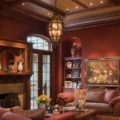Electronics company Samsung has recently announced its success in creating LED lighting and display panels on window glass. Once again, engineers have proved the versatility and potential of LED light bulbs.
Until now, manufacturers have used sapphire substrates for certain LED light bulbs. The substrates are wafer-thin surfaces made from sapphire gemstones. To create LED lighting, electronics companies put a film of semiconductors across the substrates. These semiconductors are a chemical compound called gallium nitride (GaN).
But GaN LED light bulbs have limitations. They are no bigger than five centimetres across. By placing GaN semiconductors on glass, however, Samsung has increased this size by up to 20 metres.
Such large LED panels may seem extreme. But what really matters about this breakthrough is Samsung’s use of ordinary window glass. Windows are in every home and office; LED light bulbs could therefore become an integral part of future buildings.
Homes, for example, could have LED windows. When night falls, the windows become panels of light. Or GaN LED light bulbs could create a window display of a favourite scene, disguising what lies beyond the glass.
In office buildings, LED light bulbs could change slabs of plain glass into spectacles of colour. And window-shopping in the high street could take on a new meaning if LED ads and images appear on the glass fronts of retail outlets.
The new technology will not be in common use for a while. It may take ten years to ensure GaN LED light bulbs on glass are commercially viable. But when the technology is ready for mass production, it’s sure to trigger interest. Not only are GaN LED glass panels creative; like other LED lighting systems, they use little electricity, have long lives, and are kind to the environment.
Date: November 2, 2011
Tags: led technology
To create LED lighting, electronics companies put a film of semiconductors across the substrates. These semiconductors are a chemical compound called gallium nitride (GaN).




